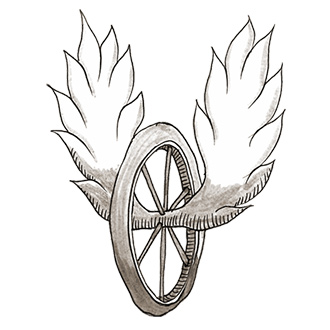
Related Questions
- Why does traffic bottleneck on freeways for no apparent reason?
- Are Santa’s reindeer used for propulsion or navigation?
- Why hasn’t commercial air travel gotten any faster since the 1960s?
- Can helicopters fly upside down?
- How does an airplane stop on a runway after landing?
- Can robotic submarines collect specimens at any ocean depth?
- Will public transportation ever replace the automobile?
- What’s the difference between a motor and an engine?
- Can I start my car with a voice command?
- How can a person ride a motorcycle 100 mph but not stand up in a 100 mph wind?
What is the relationship between the length of a boat and its maximum speed?
A boat’s ability to go fast is a balancing act between its length and the power driving it, whether supplied by wind or engine…
By Deborah HalberA boat’s ability to go fast is a balancing act between its length and the power driving it, whether supplied by wind or engine, says Jerry Milgram, William I. Koch Professor of Marine Technology.
In the 1800s, William Froude, researching warships for the British Admiralty, observed that models run at speeds in proportion to the square root of their length. Although his ratio, known as the Froude number, is commonly cited in reference to speed, nowhere did Froude make reference to a maximum or unattainable speed based on a craft’s waterline length. His formula — the boat’s created wave length equals its hull length in feet at the waterline — is a rule of thumb providing an approximate maximum efficient speed given the size of the wave created by a given boat, says Milgram, who has worked on sail and hull design for every America’s Cup boat since 1968. The only real limit to a boat’s speed is the amount of power it can realistically accommodate.
A boat moving through the water creates a pattern of waves, including one along the vessel’s side that produces a crest of water at the bow and a trough at the stern. When wave length is close to boat length, it creates a large crest that pushes the boat back into its own trough, and the boat will effectively slam up against a nearly impenetrable wall of water resistance. Only giving a vessel enough speed to lift its bow out of the water and skim, or plane, above the bow wave will allow it to overcome the resistance it creates. “A lot of power boats skim across the surface, but it takes a lot of power to get over the hump in the resistance curve,” Milgram says. “The longer the boat, the longer the wave it generates at higher speeds, and longer waves move faster than shorter waves,” he says. “It’s very difficult for a boat to move faster than the speed of a wave that is as long as a boat.”
Boat designers sometimes go to exotic and expensive lengths to get boats over the hump of the resistance curve. A boat that’s very light in comparison to its length can potentially achieve this, but if a sailboat is very light, it may not have the stability to carry enough sails to get enough power. A catamaran’s double hull can allow it to have high stability at low boat weight so it can exceed “hull speed” and move at phenomenal speeds for its length.
Posted: December 16, 2008